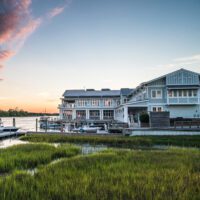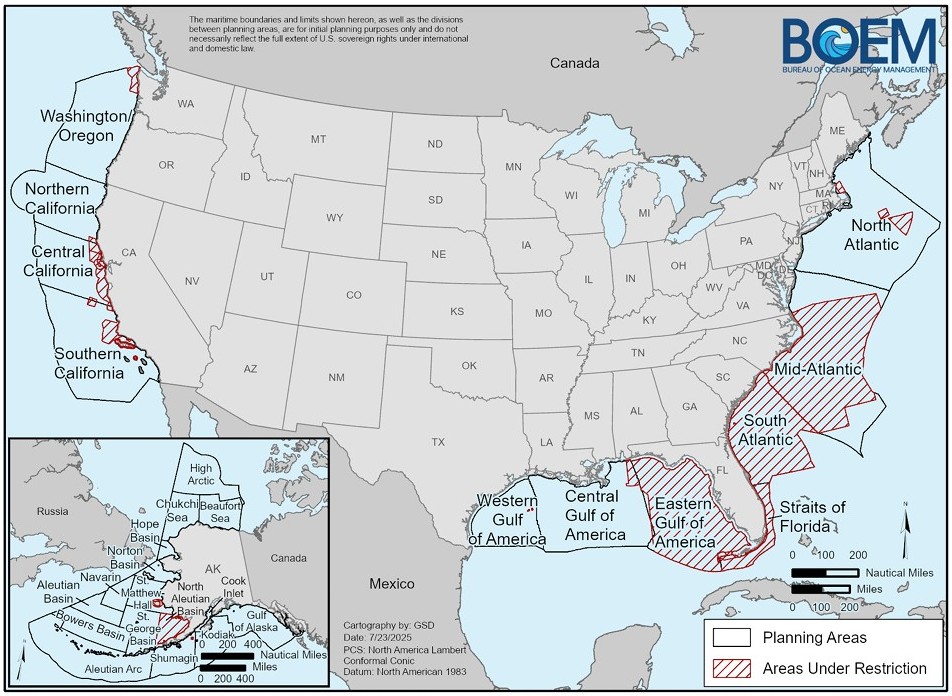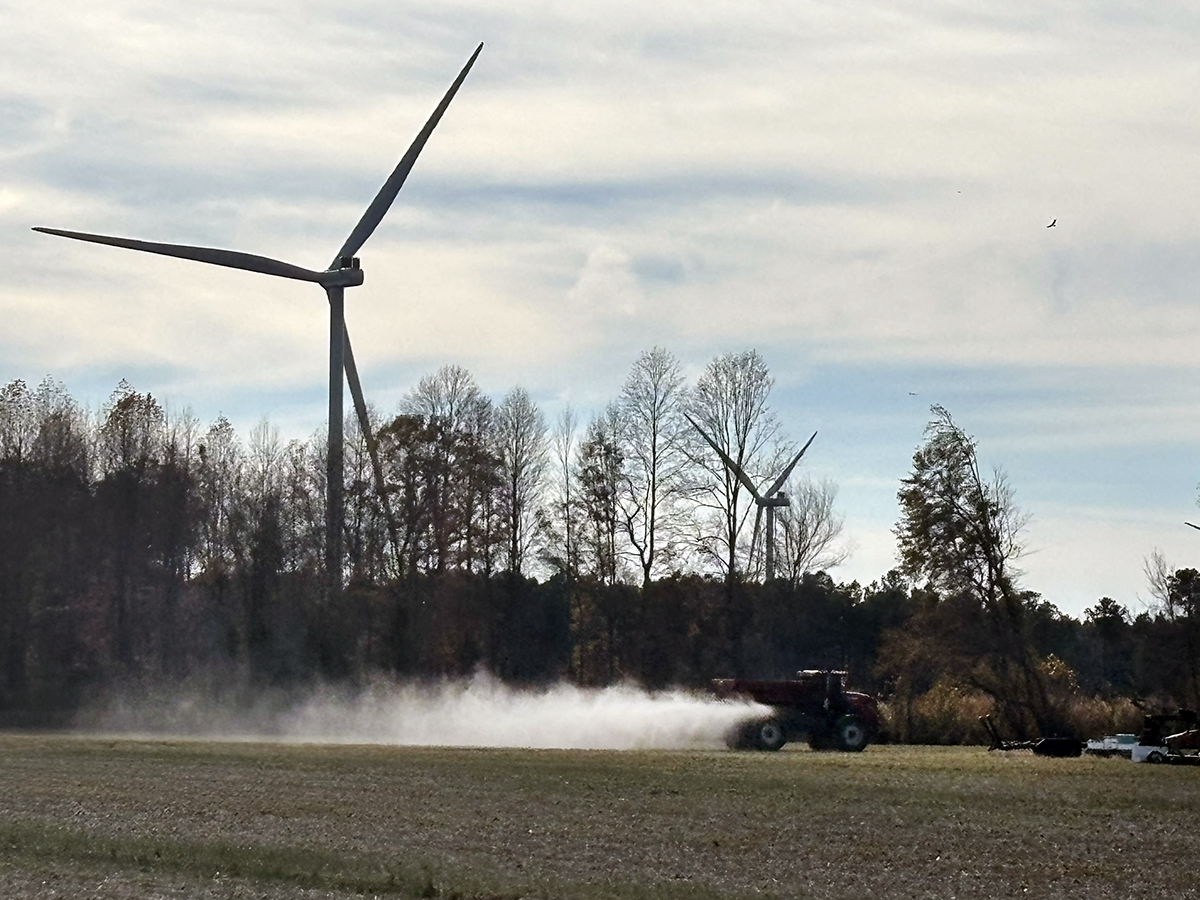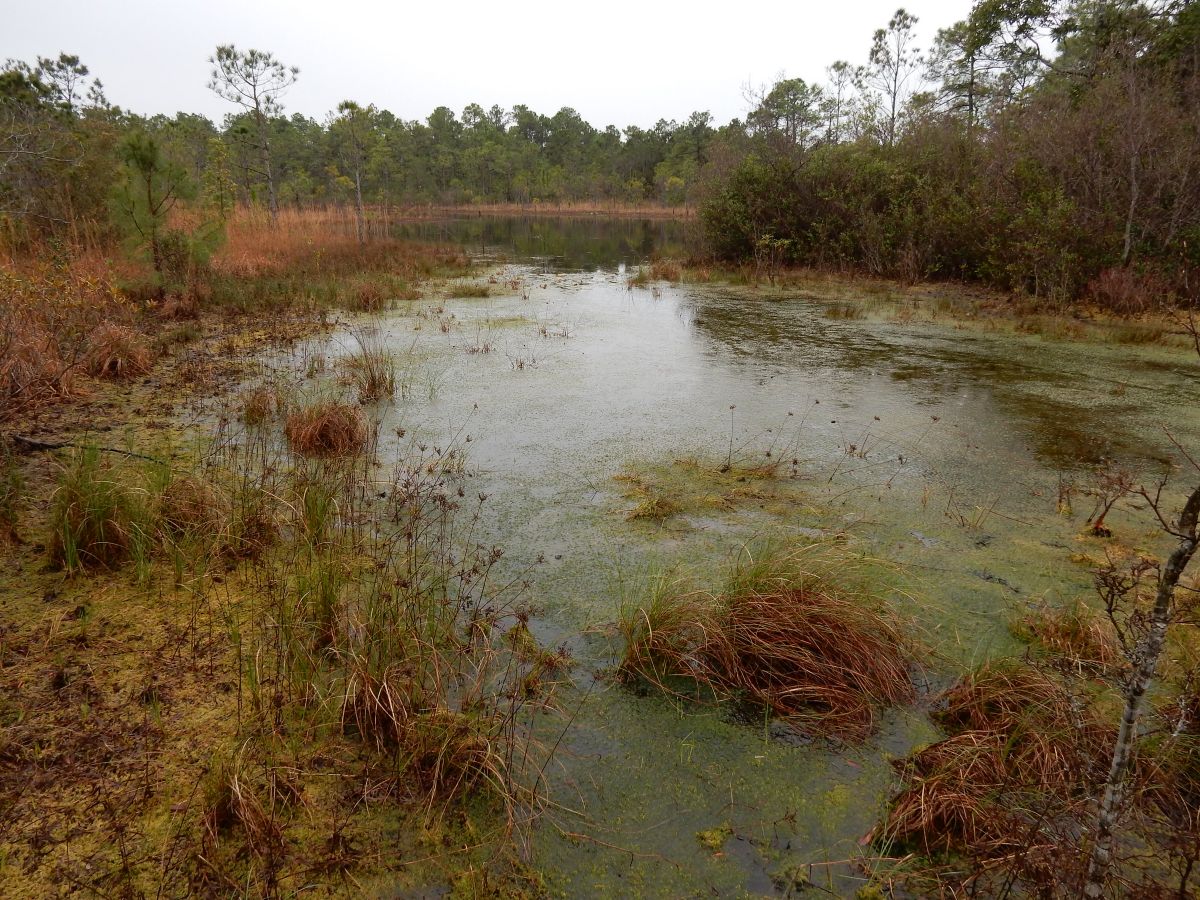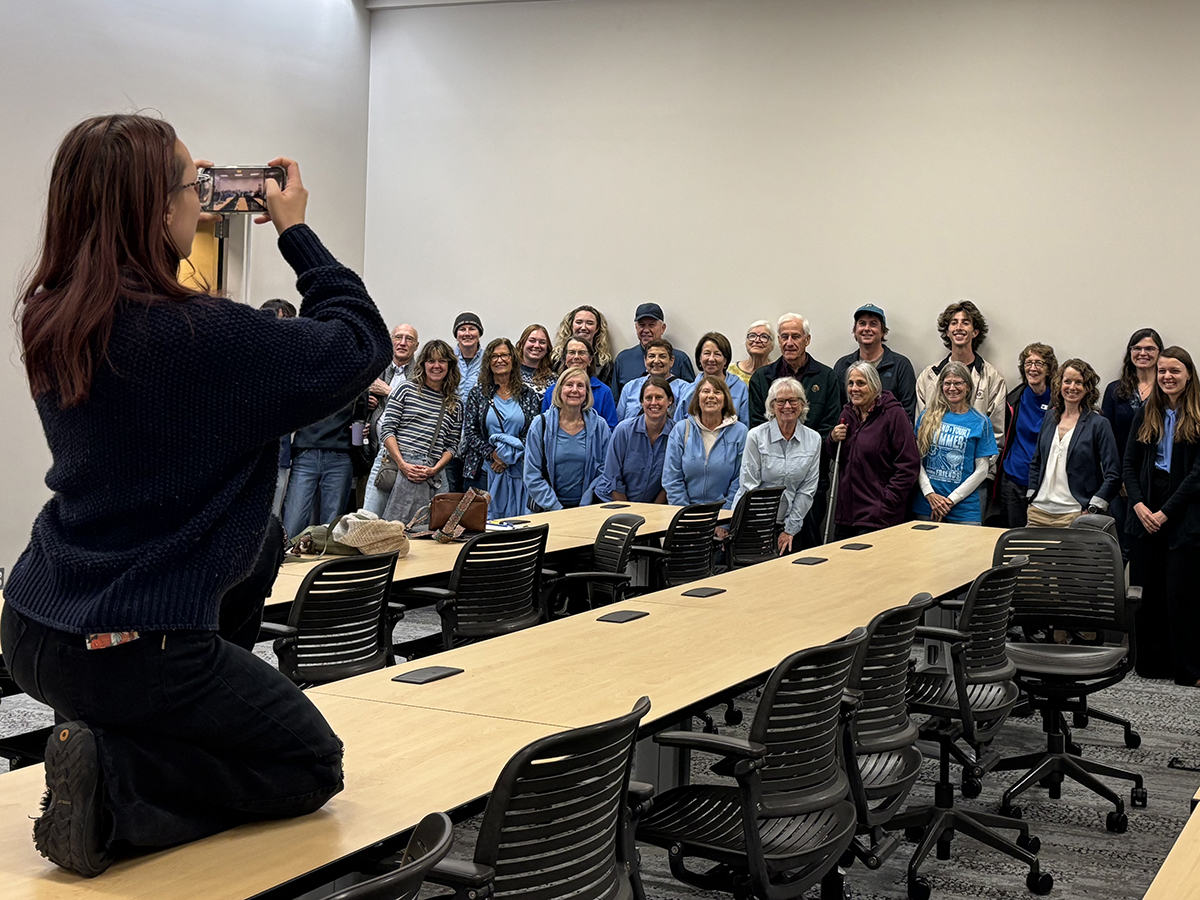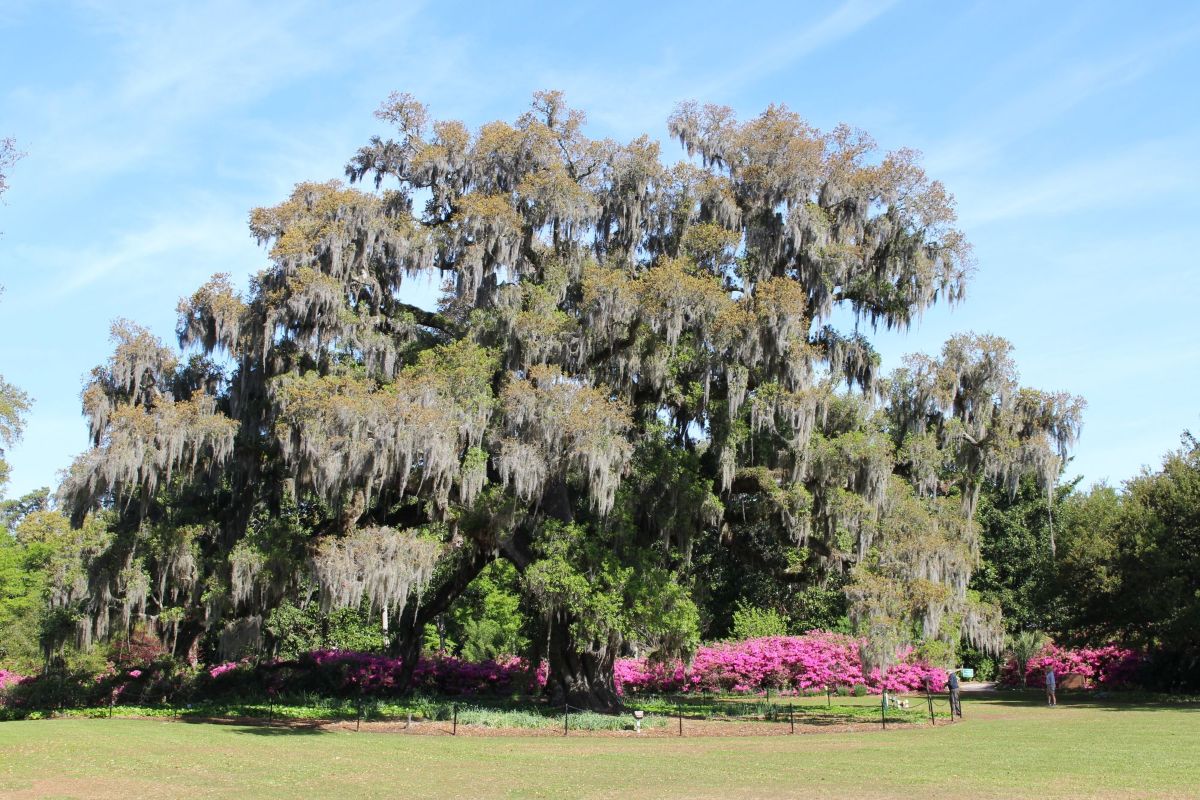
Eastern and coastal North Carolina are home to some truly enormous trees. Towering bald cypresses with buttressed trunks, ancient live oaks with branches spreading out almost endlessly. The kinds of trees that leave people stunned. And though the person beholding the tree might not know it, the magnificent thing in front of them could be, or one day become, a champion.
Designated giants
The “Champion Tree” designation is a simple concept with a big purpose. The idea is to find the largest individual specimen of any given tree species, which is then named the champion of that species. The purpose goes far beyond measurements and rankings, however.
Supporter Spotlight
As first envisioned by the American Forestry Association in 1940, the Champion Tree Program, previously called the National Register of Big Trees, was intended to identify and conserve the nation’s largest remaining trees, which were at risk during an era of economic expansion and aggressive timber harvesting. It was also hoped that the program would increase the public’s appreciation for trees and encourage community science in forestry.
Today, anyone can nominate a tree for the National Register of Champion Trees, the annual publication of the Champion Tree Program. Nominated trees are reviewed and measured by an expert under the supervision of the University of Tennessee’s School of Natural Resources, which assumed official responsibility for the Champion Tree Program in 2024, and the champions are thereby sorted out for each species.
As of last year, when the most recent national register was published, North Carolina boasted 10 national champion trees, two of which are in the coastal plains: a pond pine in Bladen County, and a silky camellia in Gates County.
In order to find champions within their borders, state forestry services eventually established their own champion tree lists, such as North Carolina’s, which took shape under the auspices of the North Carolina Forest Service in the 1970s.
This means that North Carolina has a state champion tree for each species native to the state, and any state champion tree that is not bested in size by one of the same species in another state can be named the national champion.
Supporter Spotlight
Looking for the big ones
For 25-year-old Luke Ferreira, a big-tree hunter originally from New Bern, the sense of appreciation and the scientific mindset that spurred the original Champion Tree Program are always close at hand when he goes looking for giants.
“In some of the pretty remote places we go, I wonder, has anybody ever even seen this tree before?” Ferreira said in a telephone interview. “That’s what makes it worth it to me. Sometimes you come across something that takes your breath away.”
Ferreira, who now lives in Clayton, frequently ventures back to eastern North Carolina to look for and measure large trees.
“I’d say we definitely have more champions or potential champions east of I-95 than west of it,” he said.
When Ferreira finds a large tree, he calculates its size according to the method prescribed by the national Champion Tree Program. Each inch of a tree trunk’s circumference, as measured 4.5 feet above the ground, counts as one point, as does each foot of the tree’s height. The average spread in feet of the tree’s crown is divided by four, and this score is added to the point score for trunk circumference and height, yielding the overall score by which tree sizes can be compared.
Using these methods, Ferreira determined that a water hickory he and a friend discovered in a Craven County swamp was championship material. They nominated it to the state champion list, which prompted the N.C. Forest Service, following its protocols, to send out a county ranger to verify the tree’s dimensions. The ruling? With a 210-inch circumference, a height of 124 feet, and a 71-foot crown spread, it was the new state champion water hickory.
It should be noted, however, that those measurements yield 352 points according to the official Champion Tree Program method. The current national champion water hickory is listed at only 330 points, so Ferreira says he will be nominating the tree to the national list soon.
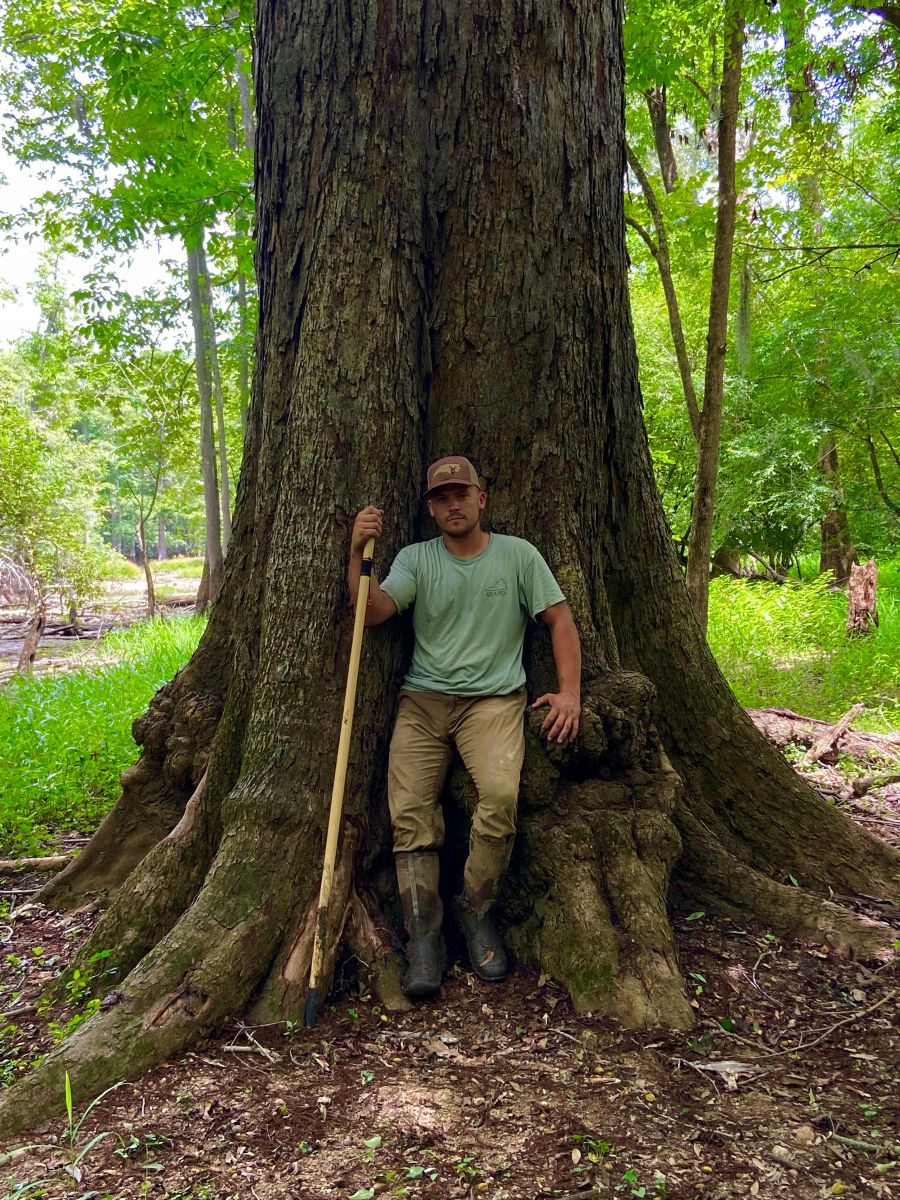
It might sound straightforward, but in reality, measuring tree sizes is a tricky business. The National Register of Champion Trees publishes a Measuring Guidelines Handbook that is 86 pages and includes two appendices and countless diagrams, so it may deter some beginners.
Luckily for Ferreira, trees aren’t just his hobby, they’re also his profession. Ferreira is a safety coordinator with Bartlett Tree Experts, so he has plenty of experience identifying, measuring and even climbing trees.
“I use a reel tape to measure the crown spread and the circumference, and then we use clinometers for height,” Ferreira said, referring to a device that calculates the height of distant objects with the help of a little trigonometry. “But if the tree isn’t too remote, I will sometimes tape drop it, where I climb up and drop the tape all the way down.”
Dying down, growing back
North Carolina’s big-tree database was taken offline in recent months before being made accessible again in early May. Andrew Pleninger, urban and community forestry program head at the N.C. Forest Service, oversees the state’s champion tree list. Pleninger said that the access issues stemmed from coinciding technical difficulties and the regular, laborious review such a program requires.
On the technical side, Pleninger said the web application hosting the database with the champion tree list was malfunctioning, prompting him to take it offline. Meanwhile, he and his staff have been working to reinspect all the existing state champions, to make sure everything on the list is accurate and up to date — a task delayed by staff shortages.
“It’s a good, popular program, and I’d like to continue to support it,” Pleninger said by telephone. “Tuning it up is one of our tasks right now.”
Maintaining champion tree registers with any kind of regularity is surely a large undertaking. Hundreds of trees, some of them in isolated mountain hollers or remote and unnavigable swamps, have to be checked to make sure none have fallen to storm, disease or axe.
As Ferreira put it, “Once something becomes big enough to be a champion, it’s already close to the end of its life anyway.”
Even the loss of a limb can cost a tree its champion status. In a cemetery in Clinton, there stands a flowering dogwood that as recently as 2021 was the undisputed national champion.
“I was amazed at how big it was,” Pleninger said of the graveyard sentinel, which was once 33 feet tall and boasted a 40-foot crown spread. “I saw pictures of it before I went, and I thought, this is not a dogwood.”
However, the old tree has since lost one of its two main limbs, reducing its size significantly. It is no longer the national champion, and is likely not even the largest flowering dogwood in North Carolina anymore. However, a recent visit to the cemetery off of N.C. Highway 24 in Sampson County proved that the tree is still alive and still impressive. Time and decay may have robbed it of its title as champion, but it’s not yet too old to bloom in spring.
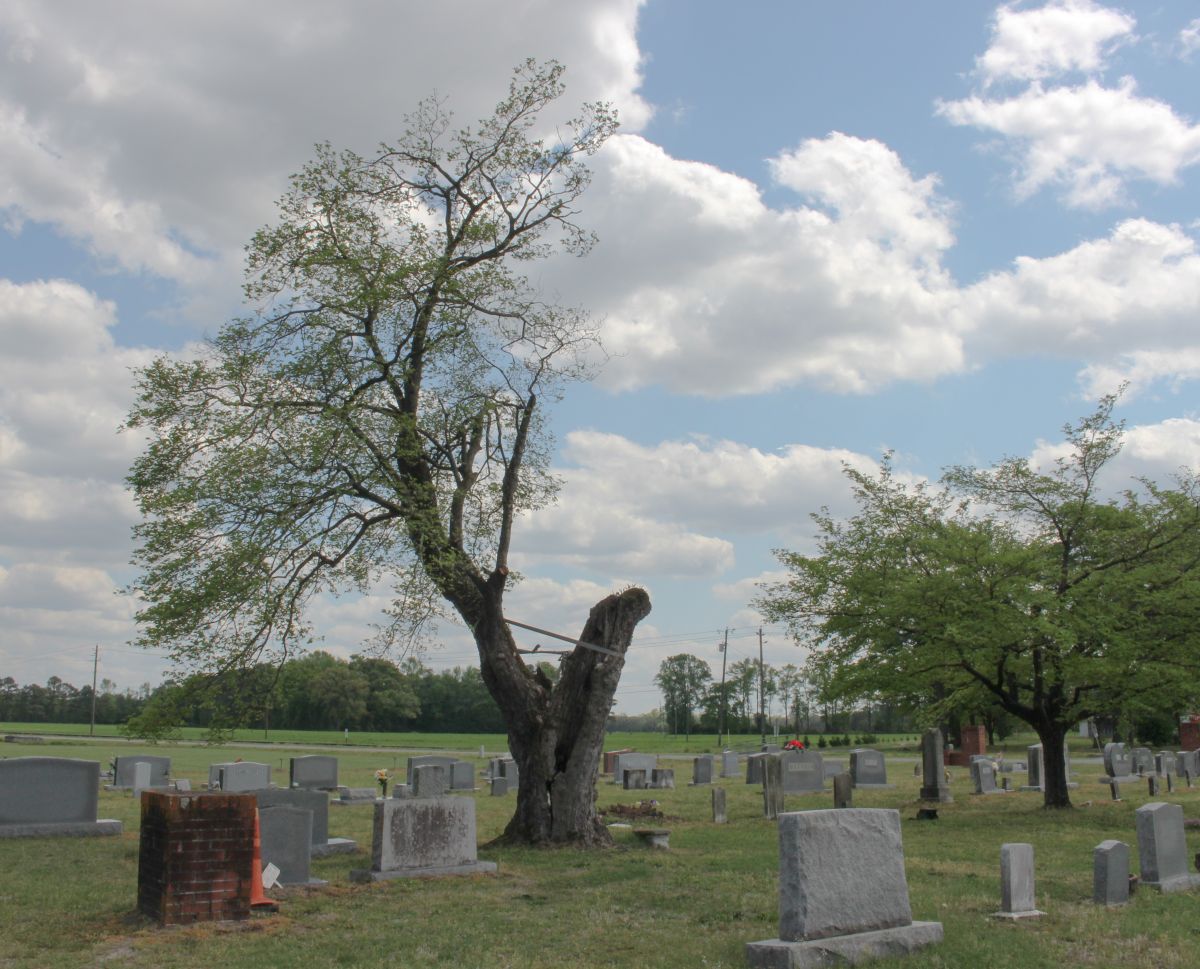
Caring for champions
The graceful leviathan at the heart of Wilmington’s Airlie Gardens isn’t just North Carolina’s state champion live oak, it’s probably one of the state’s best-known trees. It has served as a backdrop for hundreds of weddings and many thousands of photos, and it is frequently the object of concerned check-ins from the public.
“The number one question we get after every storm is, ‘how’s the Airlie Oak?’” said Janine Powell, Airlie’s director of donor relations. “After Hurricane Florence, the first thing we did was put a picture of her up, and you could see Spanish moss and branches all over the lawn, but she’s still there.”
In an interview conducted in the shade of the sprawling oak, which is thought to have sprouted sometime around the 1540s, Powell spoke affectionately of the tree, as if it were a grande dame. That sense of care is reflected in the way Airlie Gardens looks after their champion.
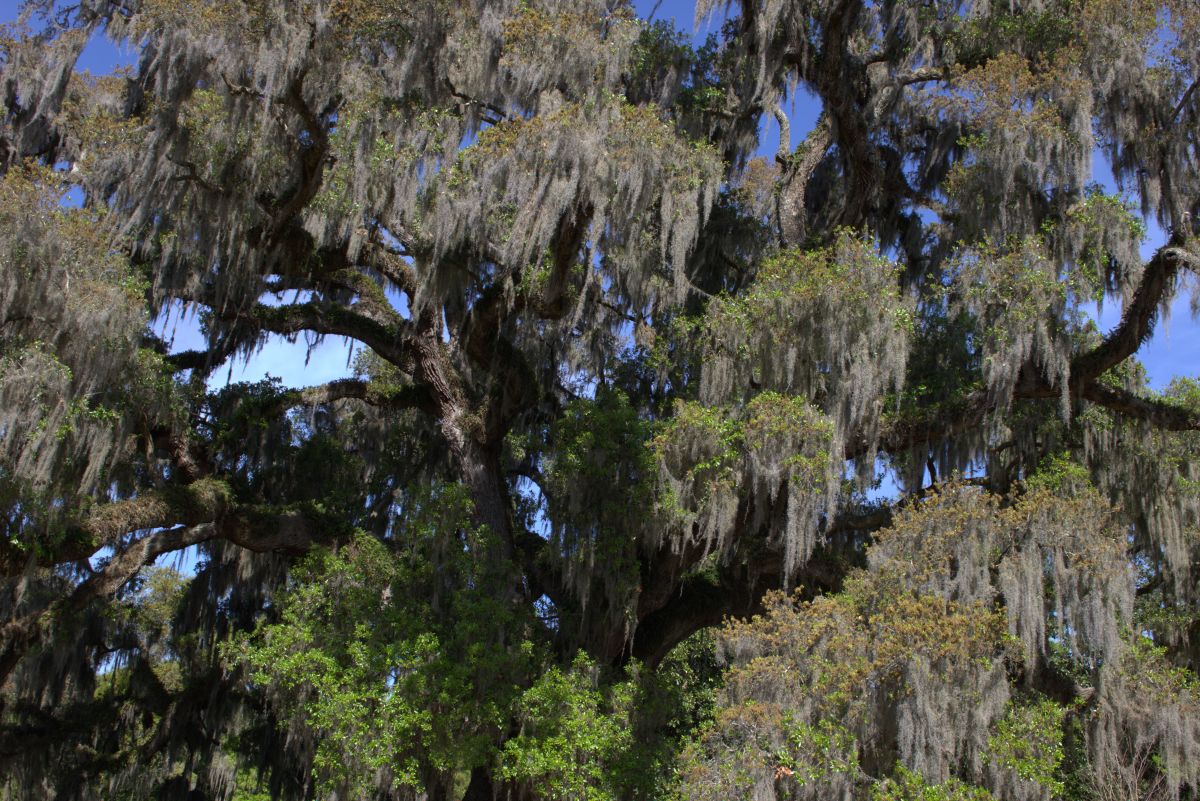
When a large branch sagged to the ground in 2019, arborists from Bartlett Tree Experts were hired to thoroughly evaluate the Airlie Oak’s health and recommend measures to protect it for future generations. A customized brace to stabilize the sagging limb, support cables for the other limbs, a grounded copper wire to protect the tree from lightning strikes, removal of Spanish moss to let in more light, aeration and fertilization of the soil. The list of treatments the tree has received reads like a testament to the love of its caretakers.
“It’s amazing how much it revitalized her,” Powell said. “She just looks better. If I look at photographs from 2014 to now, oh my gosh.”
When asked what it means for Airlie Gardens to contain a state champion tree, Powell didn’t hesitate. “For the Gardens, it means the world to us,” she said. “Just knowing that it’s been around for so long.”
To raise funds for the care of their champion and the rest of their grounds, Airlie Gardens has partnered with Penderlea Farms to sell saplings grown from the acorns of the Airlie Oak.
These “historic live oaks,” according to Powell, are intended to help educate the public on the natural shape that live oaks require to be resilient (and beautiful) in their natural coastal environment.
Through the recognition of a specific remarkable tree, they are encouraging people to think about all trees a bit more deeply. Appreciation, protection, education — they’re all there, the original hallmarks of the Champion Tree Program.

